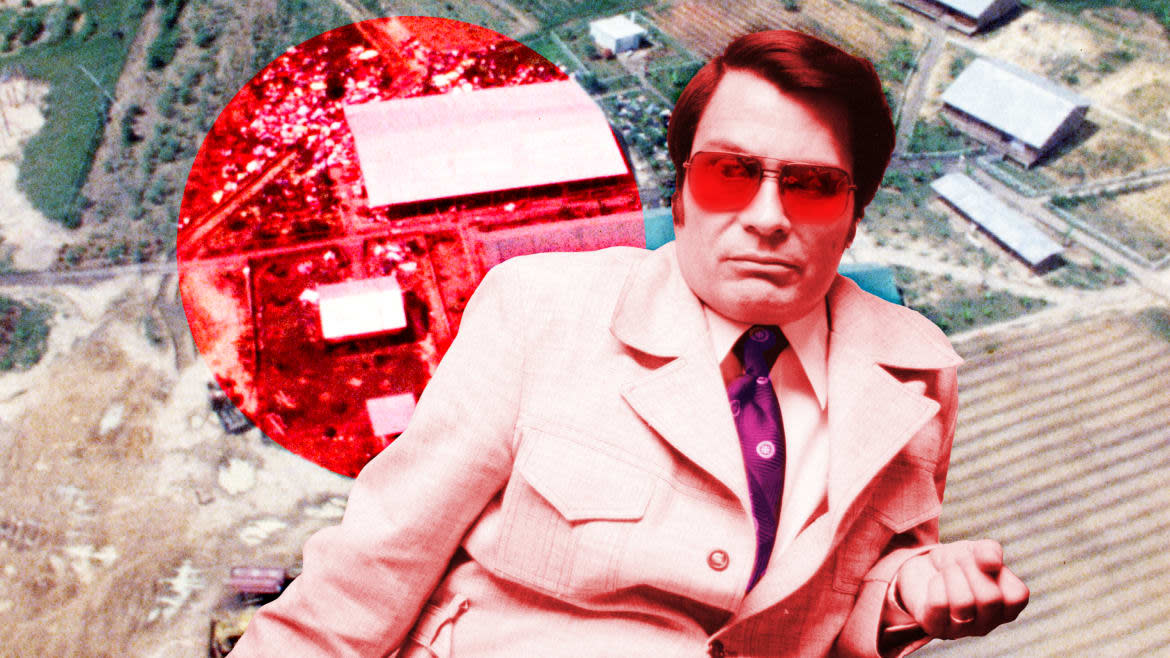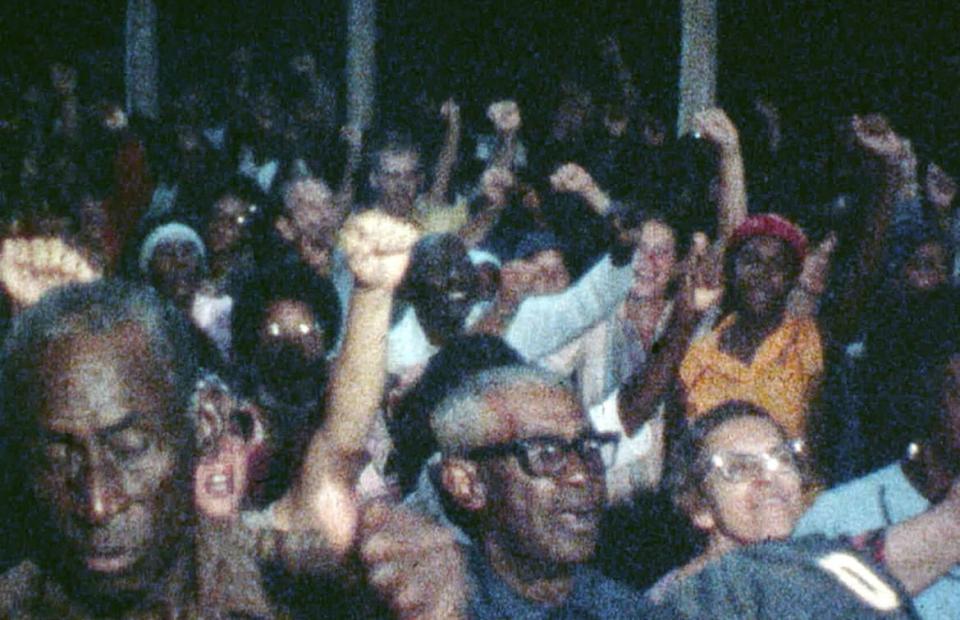What Happened in Jonestown if You Refused to Drink the Kool-Aid?

The Jonestown massacre is so well known that the phrase “drink the Kool-Aid” has become part of the American vernacular—a fact that still rankles Stephan Jones, son of cult leader Jim Jones, who believes that it dehumanizes the victims by casting them as merely brainwashed lunatics who took their own lives. “That night was murder,” he contends in Cult Massacre: One Day in Jonestown. Director Marian Mohamed’s three-part docuseries, however, splits the difference by suggesting that both things were true, all while providing a harrowing blow-by-blow account of the fateful final days at the compound, where 918 people died thanks to their messiah’s homicidal wishes.
Premiering on Hulu on June 17 and on National Geographic (its producer) on August 14, Cult Massacre: One Day in Jonestown is an up-close-and-personal portrait of Jonestown’s downfall. Its definitive nature is the byproduct of an amazing amount of archival footage shot by news reporters on and around November 18, 1978, when things took a monstrous turn at the isolated Guyana settlement, as well as the participation of many of the people who were on the ground when all hell broke loose. Most bracing of all, perhaps, is a new interview with Stephan, who was in the country’s capital city of Georgetown when Jonestown devolved into murder and mayhem, and who has plenty to say about his dad and the mania that drove him to embark on his horrific course of action.
In a brief contextual intro about the origins of Jones’ Peoples Temple church, Stephan remarks that, “Folks have really not done a good job of showing what was attractive about my father. I’m not here to protect his memory at all. But so what you see in the media about my father, one who didn’t experience the Temple, can’t help but think, why would anyone follow that guy? There must have been something wrong with these people from the start.” Instead, he argues that Jones was a charismatic preacher whose vision of an inclusive multicultural society was inspiring to many, especially during a turbulent ’70s still grappling with racial divisions, economic hardship, and the conclusion of the Vietnam War. In separate conversations, some of Jones’ followers echo those sentiments, highlighting the spirit of tolerance and compassion that compelled them to eagerly join—and remain committed to—the Peoples Temple.
Jones soon became convinced that the only way to achieve his dream was to create it himself. Thus, he purchased land in the remote jungles of Guyana, moved his followers to it, and had them construct a self-sufficient community. Film footage from that period features members happily toiling away and singing Jones’ praises. Nonetheless, word eventually began creeping out of Jonestown that things weren’t as idyllic as they appeared, and courtesy of the efforts of ex-members like Grace Stoen, California congressman Leo Ryan took it upon himself to spearhead an investigation that involved traveling to Jonestown. After some contentious back-and-forths, they finally did make it to the compound, where they were treated, on the night of November 17, 1978, to a joyous singing-and-dancing pavilion performance. In a chilling clip, Ryan tells the crowd that he’d heard they thought Jonestown was the best thing that had ever happened to them, and in response, the audience roars with deafening approval.

Peoples Temple members congregate during an event in Jonestown, Guyana.
Yet that façade didn’t last. During the festivities, NBC News correspondent Don Harris was slipped a note from a member that indicated they were being held against their will. The next day, Harris confronted Jones on camera. “People play games, friends. They lie. They lie. What can I do about liars? I just beg you, please, leave us,” Jones pleads in the interview, claiming that members are free to go at any time. This was a lie, as would soon be proven. While in the process of evacuating some members to the nearby Port Kaituma airstrip, Ryan was attacked by a knife-wielding assassin. That attempt failed, but upon reaching the plane—and waiting for a second one to arrive, to accommodate all their passengers—armed gunmen showed up and, on Jones’ orders, opened fire. Five were killed, including Ryan; the rest pretended to be dead or fled into the jungle.
All of this is recounted by the men and women who went through it, including Ryan’s aide Jackie Speier, reporters Charles Krause (Washington Post) and Tim Reiterman (San Francisco Examiner), NBC sound recordist Steve Sung, and former Peoples Temple members Thom Bogue and Tim Carter, who lost his wife and daughter on November 18, and who survived himself simply because he was ordered at the last minute to deliver Jonestown’s funds to the Soviet Union embassy (as Jones’ final slight to the U.S.). Their memories of the hours and minutes spent in Jonestown, being shot up at Port Kaituma airstrip, and fleeing for their lives, are intensely harrowing, and lend the material an engrossing you-are-there intimacy.
Also contributing to that effect are audio recordings of Jones on November 18 in which he encourages his flock—some of whom were, by that point, less than enthusiastic about killing themselves and their children—to “die with a degree of dignity, lay down your life with dignity. don’t lay down with tears and agony.”
By the time the U.S. military arrived at Jonestown, virtually everyone who had stayed was dead, and as Cult Massacre: One Day in Jonestown illustrates, not all of them went willingly. Though myriad disciples willingly drank Jones’ poisoned Kool-Aid, many others were discovered with syringes stuck in the backs of their necks, indicating that anyone who had sought to disobey the cult leader’s commands had been executed by his soldiers. As for Jones himself, he shot himself in the head, leaving behind a legacy of unforgettable loss and madness.
For his once-devoted acolytes, the process of moving past these events (and their own roles at, and faith in, Jonestown) remains difficult. In its closing moments, Mohamed’s docuseries strives to end on a celebratory note about resilience. Yet as Stephan admits, getting over this unthinkable calamity—one of the largest mass murders in American history—is a “work in progress.”
Get the Daily Beast's biggest scoops and scandals delivered right to your inbox. Sign up now.
Stay informed and gain unlimited access to the Daily Beast's unmatched reporting. Subscribe now.


